Microphone measurement and sound check
First of all, we can also measure the frequency range of the microphone to accommodate the feedback of the readers. For this we use our measuring room again, but we virtually reverse the process. Of course, a true reciprocity calibration as a starting point exceeds our current possibilities and the effort far exceeds the benefits. That is why we have sought a compromise.
However, since we have a calibrated measuring microphone, a comparison measurement and the calculation of the differences can at least produce a curve that is easily usable for our purpose. So it is not the exact frequency response of the microphone, we would not presume that, but a meaningful approximation, which also underpins our subjective impression.
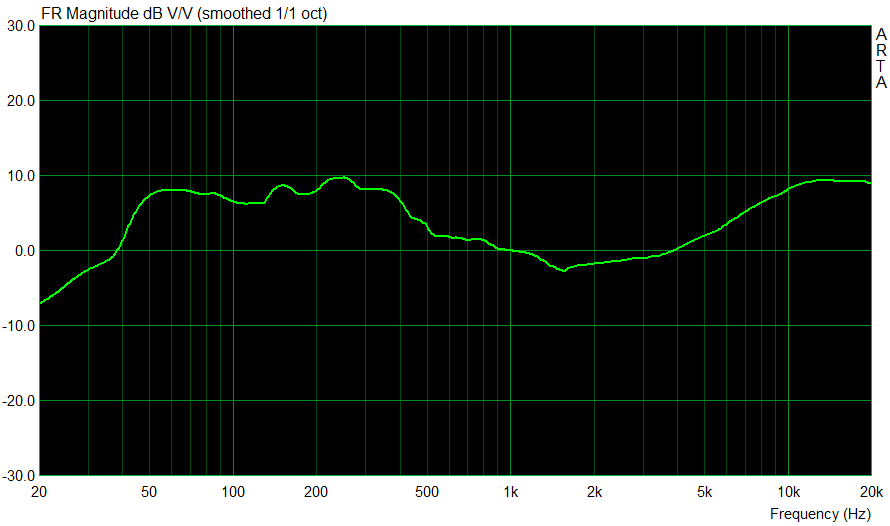
Measuring and audible you can see that there is no real low-cut and that the bass range is almost over-present. Hence the buzzing when plucking and turning on the microphone arm. The speech intelligibility is still good and the level sufficiently high.
Only the supplier knows why this somewhat low-weighed interpretation was chosen, which, admittedly, sounds very warm. The same microphone on the Khan Pro was already slightly bass-heavy. What sounds very pleasant are sibilants or Hissing, because the high tone is not overly dominant.
Headphone measurement
As we test, we have already explained in the basic article "Gaming Headsets: Myth, Truth and How we Test" very detailed and transparent, because with the usual audio-swirl of bass thunderstorms and high-pitched whips you can't really get any further. You have to be able to listen subjectively well and measure at the same time. Let us start with the latter.
Let's move on to measuring the quality of the headphones. I have again normalized the frequency curve at 1 KHz to 0 dB, so that on the one hand one can evaluate the overall course with all encores and frequency waste and on the other hand not completely loses the possibility of comparison to previous measurements. But it is still different, because the smoothing (1/1 octave) is supplemented by the almost unsmoothed representation (1/24 octave). Of course, all of this looks much more "hilarious", but also fits much better with reality. Because one thing is also clear: it does not exist, the ideal curve.
But let's start with the smoothed curve, because it's easier to explain. What we see is a typical bathtub with under-represented mids and very dominant heights. The bass is there, but very restrained, which of course meets the level when you are looking for the maximum sound pressure. However, if you adjust everything with the equalizer so that I can measure a neutral result, the level strength is over, because the amplifier with its 15 mW per channel already takes over.
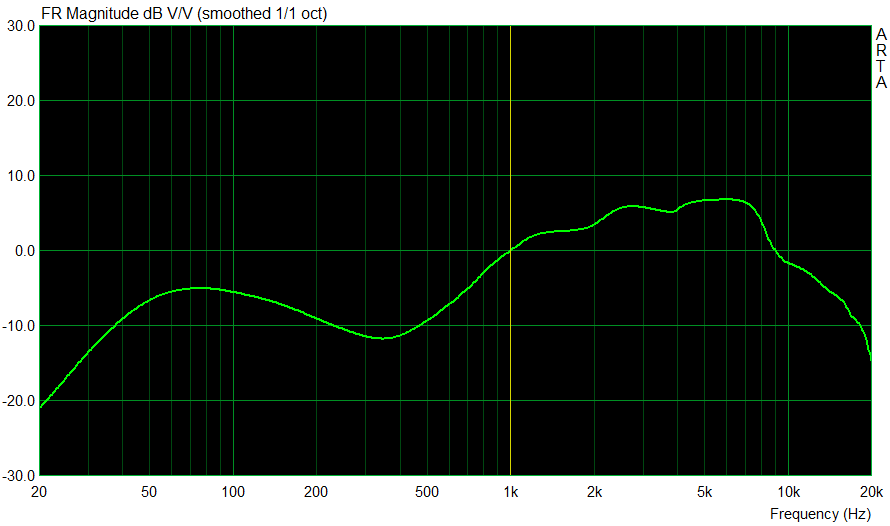
Now let's put aside the PR-compatible display and look at the unsmoothed curve. Of course, the "only" semi-professional measuring equipment also plays a role here, but nevertheless the measured is very similar here as well. We can see here once more clearly that the bass tuning in the peak at approx. 67 Hz, but still below the level normalized in the graph at 1 KHz. This is certainly a compromise between draught and level strength, but also audible.
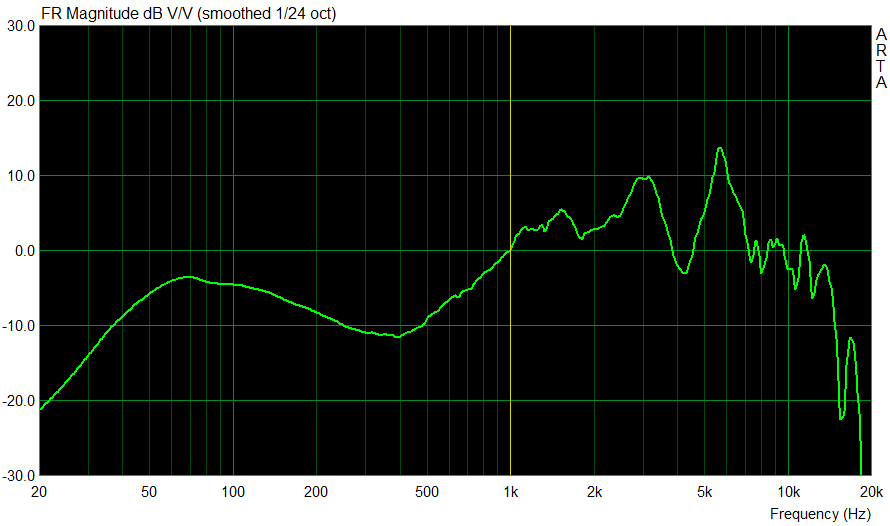
Of the 40 KHz according to the data sheet, there is somehow nothing left on the USB, although the same microphone could already display other headphones and headsets with significantly higher frequencies up to well over 20 KHz, which do not carry a golden label. But with the 40 KHz, this is nonsense anyway, because then you can measure all sorts of things, just not a real useful signal. No matter and as a gift.
Cumulative Spectra (CSD and SFT)
The cumulative spectrum denotes different types of diagrams that show time-frequency properties of the signal. They are generated by successive application of the Fourier transformation and suitable windows to overlapping signal blocks. These analyses are based on the frequency response diagram already shown above, but also contain the element time and now show as a 3D graphic ("waterfall") very clearly how the frequency response develops over time after the input signal stopped. In colloquial terms, such a thing is also called "end" or "swingout".
Normally, the driver should also stop as fast as possible after the input signal has been dropped. However, some frequencies (or even entire frequency ranges) will always subside slowly and then continue to appear in this chart as longer-lasting frequencies on the timeline. This is a good way to see where the driver has glaring weaknesses, perhaps even "squealing" or where, in the worst case, resonances may occur and disturb the overall picture.
I will now test two types of cumulative spectrum:
Cumulative Spectral Decay (CSD)
Cumulative spectral decay (CSD) uses the FFT and a modified rectangular window to analyze the spectral drop of the pulse response. It is mainly used to analyze the speaker response. The CSD typically uses only a small FFT block shift (2-10 samples) to make resonances more visible throughout the frequency range, making it a useful tool for detecting the resonant of the converter.
The picture at Roccat Khan Aimo is good, but not outstanding. You can see very clearly that in the bass area hardly any resonances or vibrations occur. This is good and also shows that no pointless mechanical sounding was done for the basses. Between approx. 2 and 6 KHz, on the other hand, there are light swingers, which, however, are 2 ms are also history. This is measurable, audible even if you listen more specifically and know what you are looking for. But it could at least be a reason for the high-frequency peak and would then be due to the built-in driver.
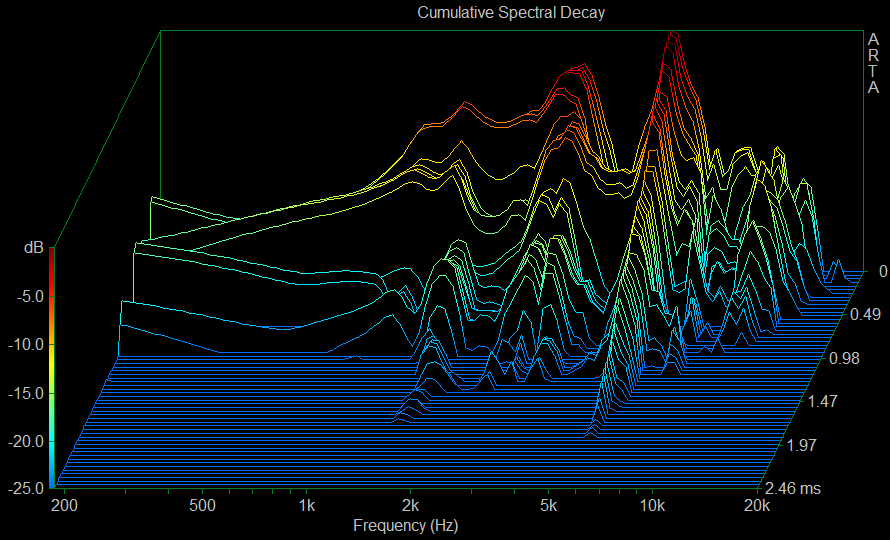
Short-time Fourier Transform (STF)
The Short-Time Fourier Transformation (STF) uses the FFT and Hanning windows to analyze the time-varying spectrum of recorded signals. In general, a larger block shift (1/4 to 1/2 of the FFT length) is used to analyze a larger part of the time-variable signal spectrum, whereby one gets closer to the fields of application such as language and music.
In the STF spectrum we now also see very nicely the work of the drivers, who unfortunately in some frequency ranges can afford some slight weakness. This "pulling" at some frequencies underlines the presumption that here the tweeter is also mechanically pushed by the driver, which I personally find rather a pity and exaggerated.
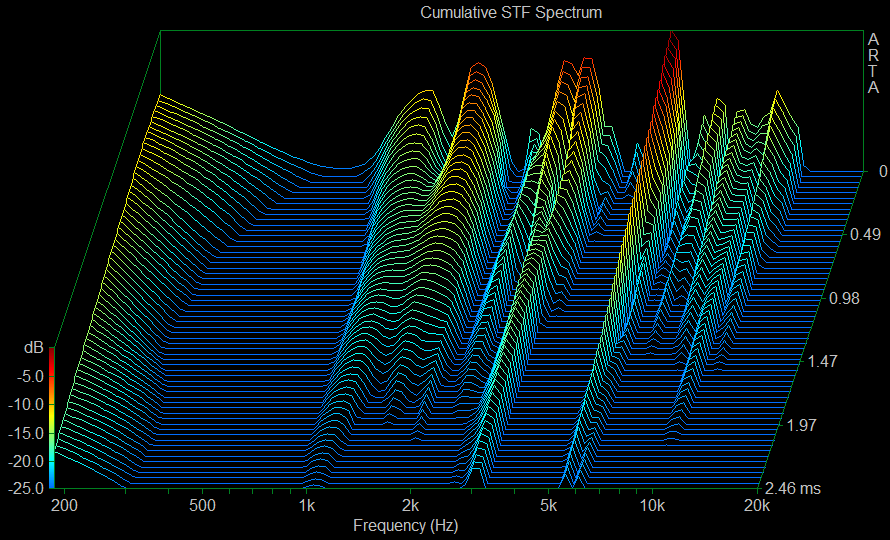
What remains as a summary is an acceptable settling behavior, a rather average performance and the fact that one finds quite resonances. This is certainly not a broken leg for a gaming headset, but with music I would hang the bar much higher in this price range.
Selectable Sound Profiles (DSP)
Lord, please let it rain brain! I don't know who created these curves, but none of this can be quite convincing. Then it would be better to put your hand on it and save it. The software, because it does. With this, one even tames the somewhat bird-wild heights a little, if one attaches importance to it.
Subjective listening experience
Now let's test subjectively what you get offered in the original without the offered sounding. However, as always, I locked the headset in the measuring room for almost 5 days beforehand and tormented it with a selected sound loop to scrub up operating hours. What not to do for our die-hard play fanatics among readers 🙂
Bass
Test the lowest bass in the subcontraoctave (16.4 Hz to 32.7 Hz) with a recording of Bach's Toccata and Fugue in D minor (19 and 25 Hz) and the Festival Overture 1812 by Tchaikovsky (10 Hz and 12.5 Hz). The same applies to the lower ranges of the contraoctothe (32.7 to 65.4 Hz). The big bass drum (kick drum), which in the U-music is a welcome companion and usually on approx. 55 to 60 Hz, this assessment will then be rounded off.
The bass is rather weak, but present and also plays very deep when you lift it a little. The bass drum is also more present, but unfortunately with rising levels, the level strength in the peaks also decreases. In gaming and in movies with a good effect track, e.g. Explosions present but never superficial or dominant. The bass is all in all ok, but no ear willow. Present yes, but quite inconspicuous.
The upper bass up to 150 Hz, in which also the Great Octave (65.4 to 130.8 Hz) is located, houses the basic language frequency of the male voice and decides very strongly on the true-to-life reproduction of male vocals.
Male vowels appear rather narrow-volume and flat, no matter how deep the basic tone of the speaker is. But you can like this type of game, everyone has to make up for it with themselves. For games this fits quite because the speech intelligibility increases, but with music I have my slight doubts, at least with regard to my own (rather conservative) listening habits.
Frequency range
The lower middles (also basic tone range) are approx. 150 to 400 Hz. Together with the already mentioned upper bass, this area plays a very important role for the subjectively perceived heat or bass. Fullness of the sound. The basic language frequency of female voices can be found in this area.
Female vocals sag just as well and at 400 Hz the bottom is finally reached. As a result, many basic tones of instruments or vocals weaken or even almost are missing, and everything thus also sounds quite cool and distant. This is really not mine in this form, but there should be people who particularly like it. Nor does it want to judge on its own initiative.
The upper mids between 400 Hz and about two KHz contain a mark at a KHz, which is still considered a reference for many measurements. Unfortunately, this is often noticeable with cheaper devices, as manufacturers often try to overemphasize this frequency. This area does not play an insignificant role in gaming either, and balanced playback contributes significantly to good spatial resolution.
All this comes back to the ear with increasing frequency cleaner, clearer and also more differentiated. The depth staggering is even quite good, which surprised me a bit. In addition, there is also the slight increase at the upper end, which is particularly suitable for the spatial image. Let's put it this way: you really hear what you should hear.
High-pitched range
Between two and about 3.5 KHz, human hearing is most sensitive, especially since this area of the lower heights is responsible for the good overtone reproduction of the human voice. This frequency range is crucial for the recognition of a voice or instrument; in this context, one also speaks of the respective timbre.
For me, this is all too much, because the overemphasis here seems like a turbo on the already physiological sensitivity. The gamer is well served here, however, because this rather special peak gives him exactly the frequency range he believes he can't miss when playing with a penalty of his demise. With the vote you can live safely as a gambler, but please don't listen to music with it. The recognition of voices suffers enormously, there is a lot of it just imprecisely about it. It is a pity, but I wrote about this phenomenon already in the analysis of cumulative spectra.
The middle heights (3.5 to six KHz) decide on the sound or failure of the speech reproduction as a whole, because the S- and hissing (Sibilants) fall into this range. The upper heights then reach up to approx. ten KHz to move into the super high tone.
The above-mentioned one even continues with a slight increase. This underlines the cool, almost metallic character, which is quite acceptable in gaming, but leads to the abandonment of trained hearings when listening to music. It's just not fun, because I'm not an acoustic oat-mast edible goose that you can stuff with high tone until you vomit. But at least you think you can also perceive opponents that have not yet been programmed.
Summary and conclusion
As a gaming headset, the Roccat Khan Aiomo is certainly quite good to use, which also confirms my subjective hearing test in parallel with the extensive measurements. Optics and haptics are also fine and the RGB fumble remains soothing in the background. The material look is ok, but not outstanding. For this, the wearing comfort is quite high, which is also due to the practical joint mechanics. In terms of sound, however, certain compromises have to be made.
What hardly adds value to the user is the average Xear surround solution of the low-priced all-in-one chip from C-Media, which also weakens somewhat in the amplifier performance at the back. Because the occurring distortion is already audible with the full control and the only 15 mW per channel. The measurable frequency range is not quite as optimistic as the manufacturer's claim suggests, which obviously refers only to the installed driver. Because the USB chip never manages this in the analog branch.
So where to place the Roccat Khan Aimo? Music connoisseurs and bassists are here at the wrong address, snipers and foot noise detectors are rather sooner. The headset isn't quite level-resistant, but grenades already have a natural distortion in the final perception. Also on the PC. So from that point of view, this still fits. Gaming yes, but music rather no.
For the very lazy ones, I have it all again as a YouTube video. With a little verbal kleiser. So it's worth 🙂














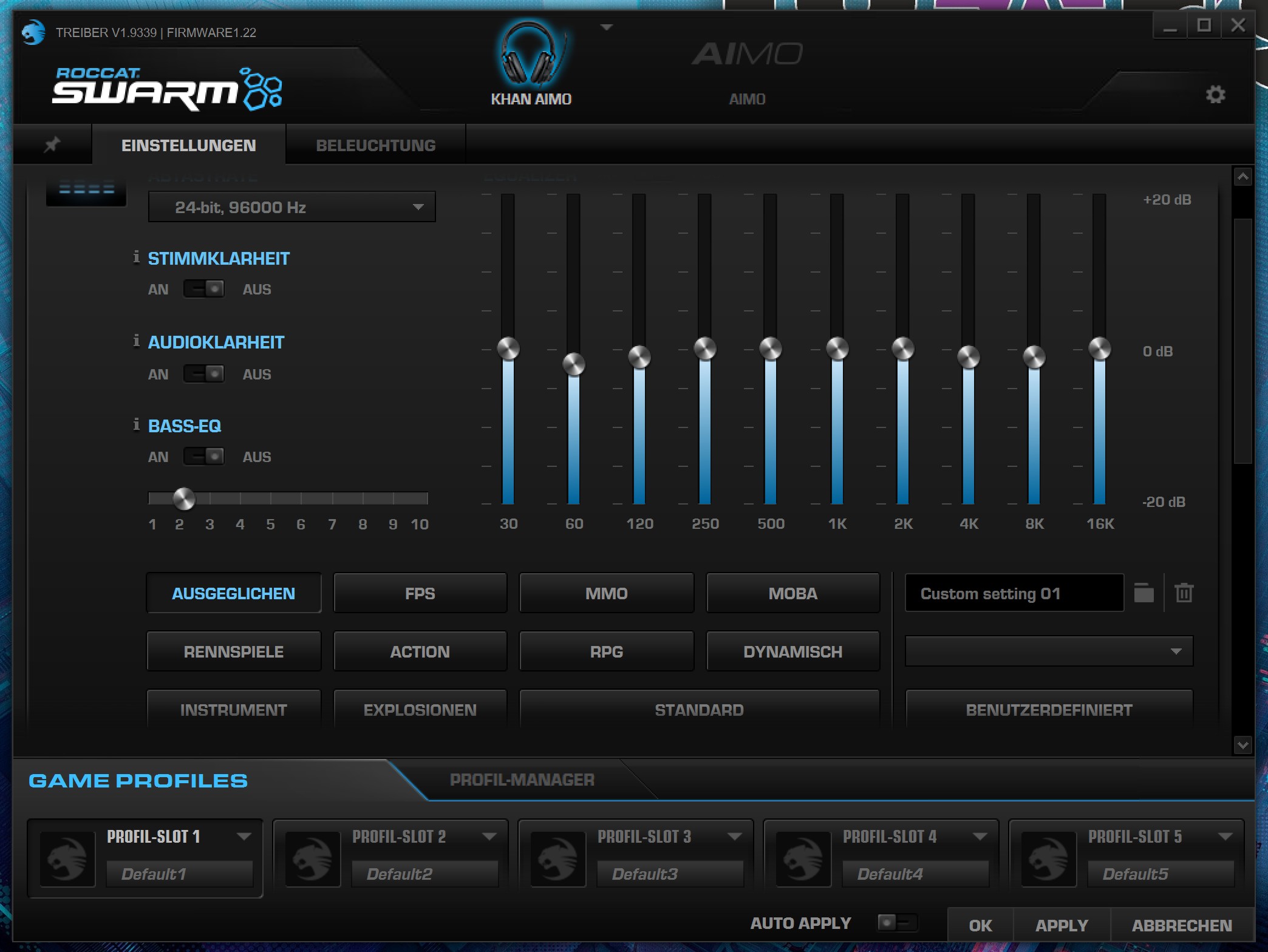




















Kommentieren